Many questions can go through your mind when considering a new motherboard. They mostly have to do with whether or not the motherboard will be a good fit for you. You may also need help wondering what parts you can expect to find packaged with a motherboard.
One of the essential parts of any computer build is the cables. Do motherboards come with cables to connect the rest of the PC components?
Yes, motherboards do come with cables, but only some of that is needed to run your PC. Mainly speaking, motherboards come with SATA cables for storage drives.
This article will clarify this answer and discuss all the different cables you need for a typical PC build.
TABLE OF CONTENTS
So Do Motherboards Come with Cables?
As mentioned earlier, yes, they do. The motherboards come with SATA cables. However, they typically come with 2 SATA cables sufficient to get you started by connecting your primary hard disk drives.
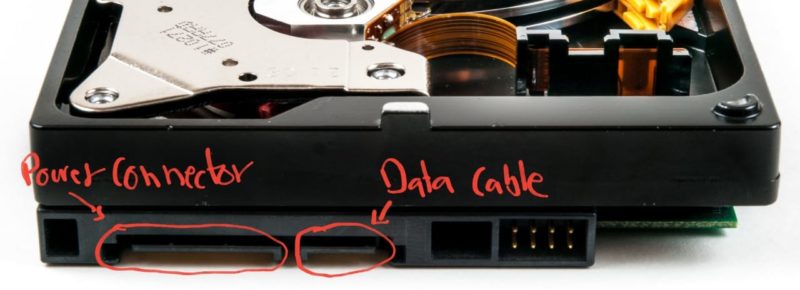
You may get more SATA cables than your motherboard can support.
For example, if your motherboard has 6 SATA slots, the package may come with only 2 or 3 SATA cables.
Again, this ensures you can connect to the necessary components from the get-go.
You do not get power, video output, or USB cables with a motherboard.
Let us look at all the cables a CPU requires and which components they come with.
Also Read:
What Kind Of Cables Do You Need for Your PC?
There are typically seven kinds of cables that a typical PC needs.
1. SATA DATA Cables
These are required to connect to the SATA ports on your motherboard and are required to run SATA storage drives.
This includes:
- 3.5″ Hard Disk Drives
- 2.5″ Hard Disk Drives
- 2.5″ SATA SSD Drives
- Optical CD/DVD Drives
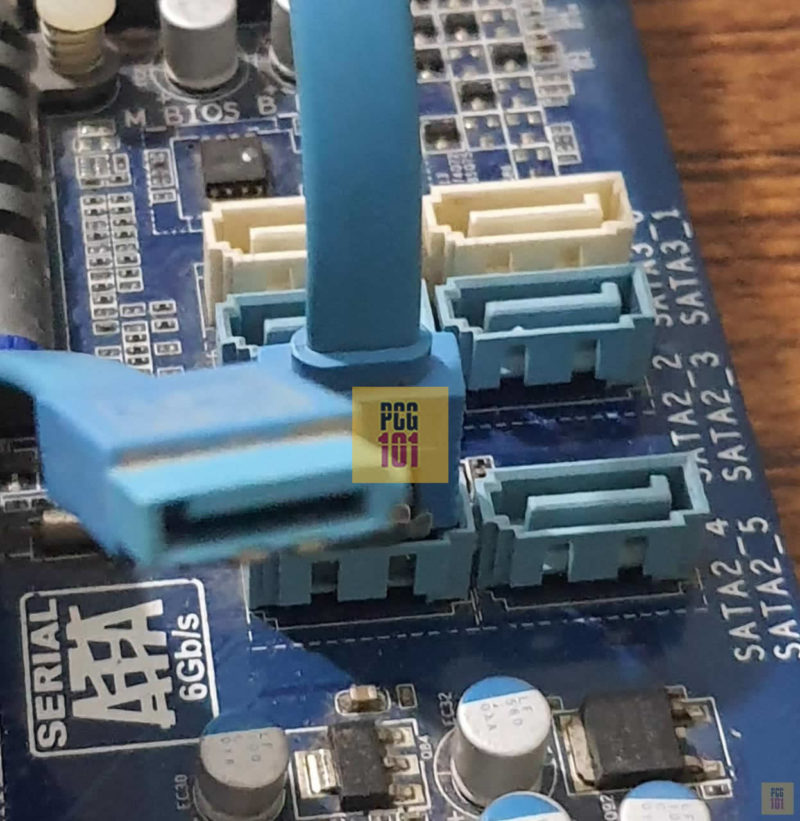
SATA cables can be easily identified by their appearance. They are flat and thin and have seven pins on either end.
Often, one of the ends may be bent at a 90-degree angle which helps in cable management.
You will plug one of the ends of this cable into its allocated slot on the motherboard, and the other will go into your selected SATA-compatible storage device.
These come with a motherboard, but only a limited number.
Also Read: How Many SATA Cables Do I Need?
2. SATA Power Cables
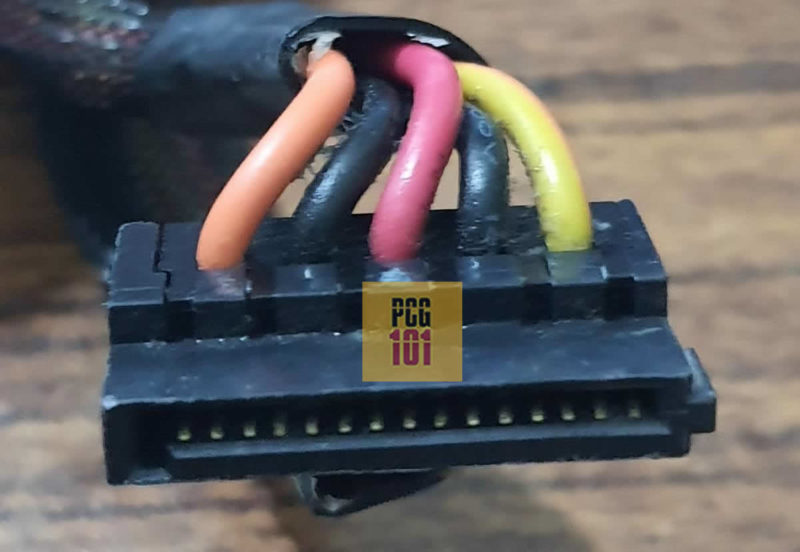
SATA Power Cables are required to operate the SATA drives. SATA hard disks, SSDs, and optical drives need a SATA Power Cable.
These come with the Power Supply Unit.
Also Read: How Many SATA Ports Do You Need?
3. PCIe Power Cables
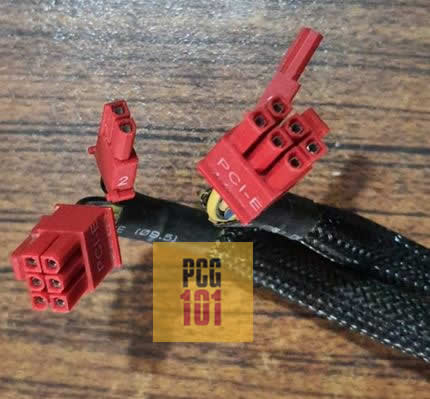
PCIe Power Cables are required to power up the graphics card.
They come in 6, 8, and 12-pin connector configurations for the demands of various graphics cards.
These come with the Power Supply Unit.
Also Read:
4. Motherboard and CPU Power Cables
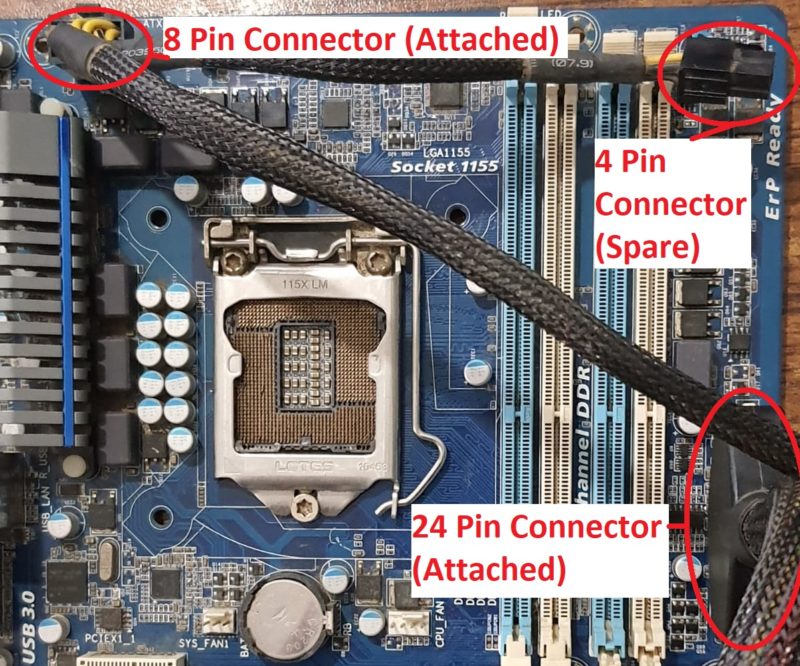
It would be best to have specialized and dedicated cables to run your motherboard and the CPU. They include the following:
- 8 Pin cable for CPU
- 24 Pin cable for motherboard
These come with the Power Supply Unit.
5. Main Power Cable
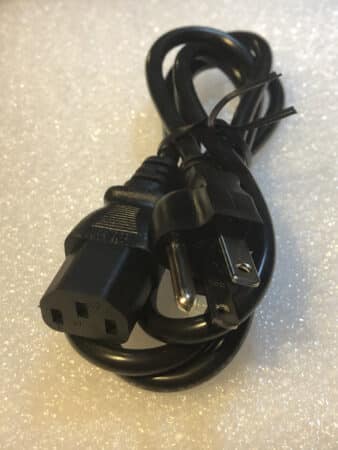
The main power supply cable connects the unit to the wall socket.
This comes with the Power Supply Unit.
6. Video Output Cables
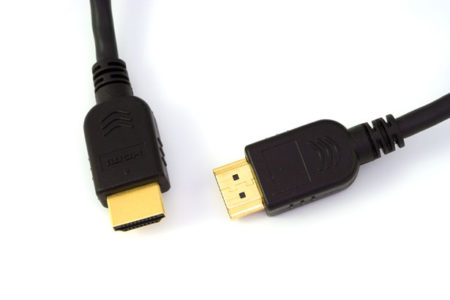
These are obvious. Have them connect your PC to your monitor.
These include HDMI, DVI-D, VGA, DisplayPort, and Thunderbolt 3 cables.
These come with a monitor.
7. Front Panel Jumper Cables
These are needed to connect the jumper cables to the motherboard front panel header. This includes the titles for power on, restart, led lights, etc.
These come with the PC Case.
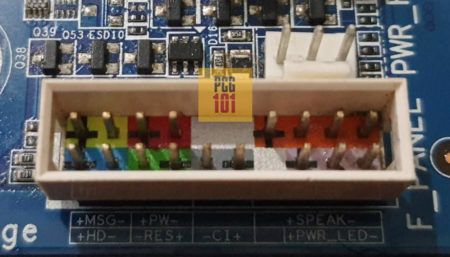
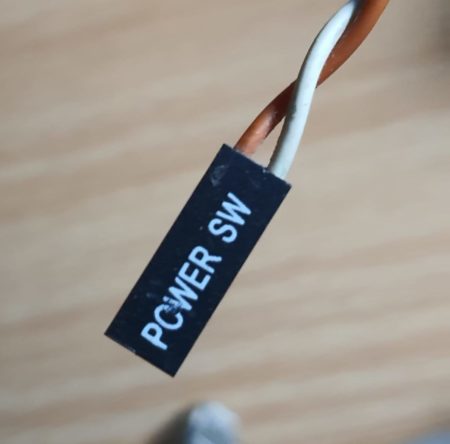
Also Read: How To Connect Power Button to Motherboard?
Summary of Which Components Comes with Which Cables Included
| Cable | Component it Comes with With |
| SATA Data Cables | Motherboard (Otwoten 2 provided) |
| SATA Power Cables | Power Supply Unit |
| PCIe Power Cables | Power Supply Unit |
| Motherboard and CPU Power Cables | Power Supply Unit |
| Main Power Cable | Power Supply Unit |
| Video Output Cables | Monitor |
| Front Panel Jumper Cables | PC Case |
| Front USB Cables | PC Case |
| Front Audio Cables | PC Case |
Also Read: Do Graphics Cards Come with Cables?
Would you need to buy extra cables for your computer?
Yes, depending on your build, you may need more cables for your PC.
More SATA Data Cables
As mentioned earlier, a typical motherboard comes with 2 SATA data cables even if it has 4 or 6 SATA ports.
Therefore, if you want to add more than 2 SATA drives to your PC, you must buy more SATA DATA cables separately.
Also Read: How Many SATA Cables Do I Need?
More SATA Power Cables
Each extra SATA Drive would require a separate power connector.
Fortunately, SATA Power Cables do not have to be separate. You can find SATA Power Splitter cables that can turn a single SATA Power connector from your PSU into multiple power connectors.
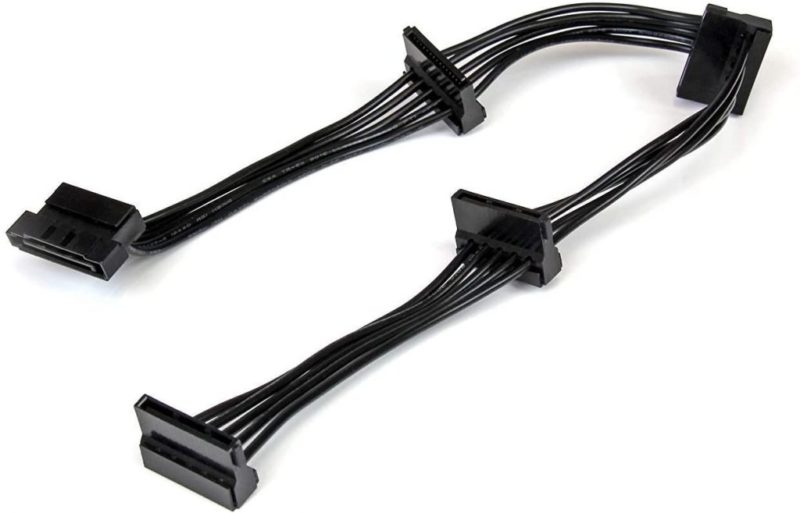
More PCIe Power Cables.
Depending upon what graphics card you have installed, you may need to procure more PCIe power cables.
This is especially true if you have multiple GPUs installed.
Most power supply units have sufficient PCIe cables for a single graphics card. You may have to invest in extra PCIe power cables for multiple GPUs.
Also Read:
What Do You Get with A Motherboard Package
A motherboard box contains more than just the board itself.
What you get with the motherboard depends upon which price category it is from.
Let us see what a typical motherboard package contains:
Also Read: Why is a motherboard important
1. The Board Itself
This is undisputedly the most important part of the package. Obviously.
It often comes with a static bag which you can use for bench testing – whereby you test the motherboard outside the case.
Also Read: How To Test Motherboard Without CPU?
2. The I/O Shield
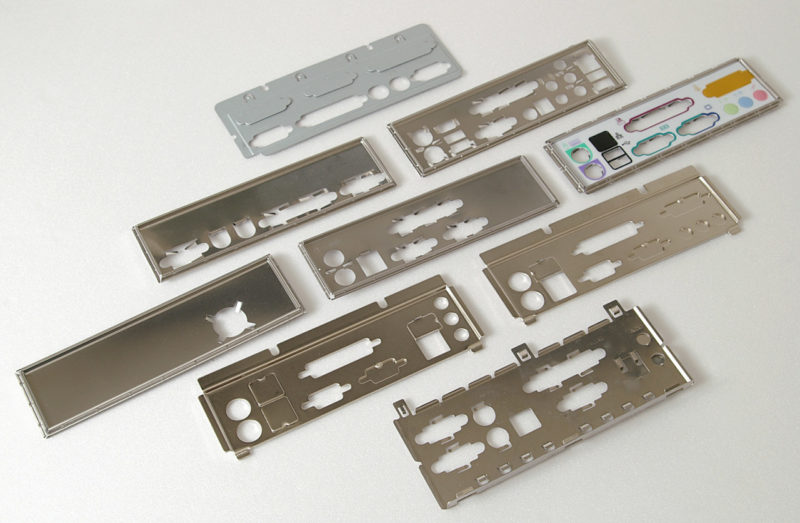
This is a thin metallic plate found with all motherboard packages. It is used as the cover for the I/O ports of the motherboard when you install it in the PC case.
These components usually ship with the motherboard themselves because they are board-specific.
ALL Motherboards have this.
3. SATA Data Cables
As mentioned earlier, the motherboard does come with a couple of SATA Data cables.
ALL Motherboards have this.
4. An SLI or Crossfire Bridge
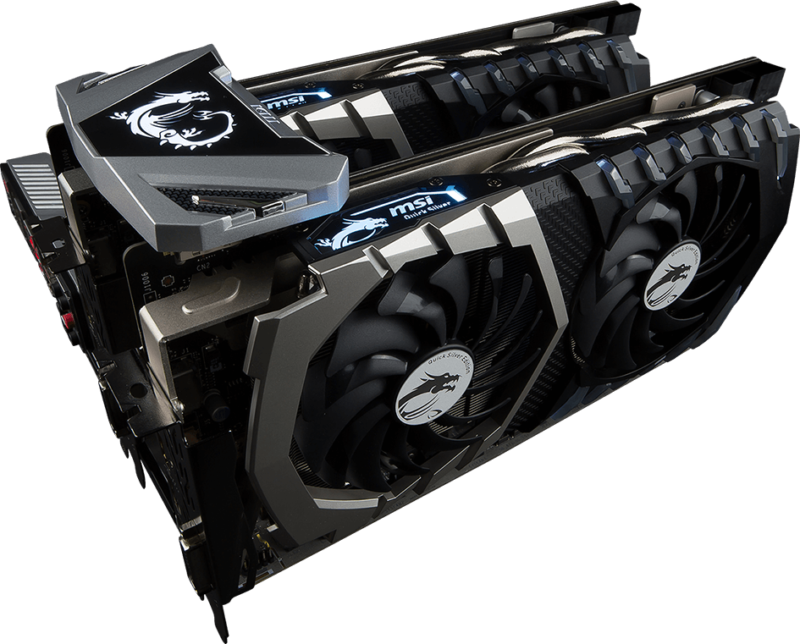
It would be best to have a bridge to enable NVIDIA SLI or AMD Crossfire for Dual Graphics card build.
This is often bought separately, but with certain high-end motherboards, this comes packaged.
5. WiFi Antennas
The motherboard with a WiFi modem built-in also offers dedicated antennas.
6. RGB Light Strips
Mid and High-end motherboards for enthusiasts and gamers often offer RGB light strips.
Also Read: How to Connect Extra Fans to Motherboard?
Final Words
So do motherboards come with cables? The most straightforward answer is yes. However, they only come with some necessary cables for your PC.
You should expect to find power cables, video output cables, or USB cables in the package, as they ONLY come with SATA cables.
However, the rest of the cables can be found with the other components you must purchase for your build.
For example, a power supply unit has all the necessary cables and connectors. Similarly, a monitor has the necessary video output cable, such as HDMI or VGA.
FREQUENTLY ASKED QUESTIONS
1. What types of video cables are typically included with motherboards?
Motherboards typically do not include video cables as they do not typically have a dedicated video output.
Most motherboards rely on the CPU’s integrated graphics to provide video output, which is then sent to a monitor via a video cable such as HDMI or VGA.
However, some higher-end motherboards may include additional video output options, such as DisplayPort or DVI, which may require corresponding cables.
2. Can additional SATA cables be purchased separately if needed?
Yes, additional SATA cables can be purchased separately if needed. SATA cables are relatively inexpensive and widely available, and can be purchased from most electronics retailers or online.
When purchasing additional SATA cables, be sure to choose a cable that is compatible with your motherboard and any connected devices.
3. What other types of cables may be included with a motherboard?
In addition to SATA and PCIe cables, motherboards may also include a variety of other cables and connectors, depending on the specific model and manufacturer.
These may include USB cables, audio cables, power cables, and various headers for connecting case fans, LEDs, and other components.
4. Are there any recommended cable configurations for optimal motherboard performance?
Yes, there are a few recommended cable configurations that can help ensure optimal motherboard performance.
For example, it is generally recommended to use the fastest available PCIe slot for your graphics card, and to avoid sharing bandwidth with other devices.
Additionally, it is important to ensure that SATA and other data cables are properly shielded and securely connected, as loose or improperly connected cables can cause performance issues and data corruption.
Finally, routing cables in a tidy and organized manner can help improve airflow and prevent heat buildup within the system.
Also Read: What Cables Do I Need for SSD?
